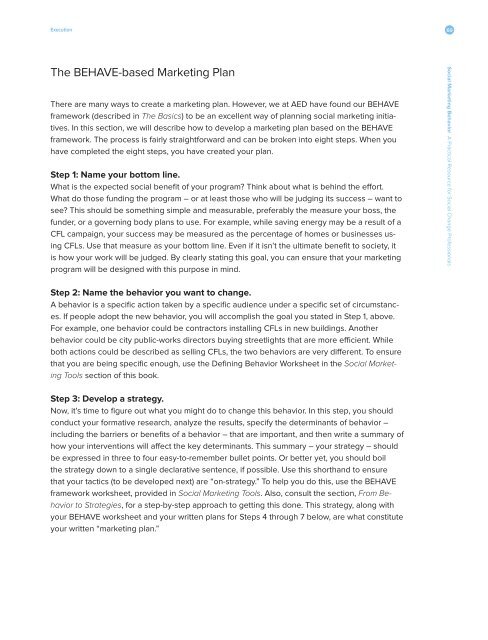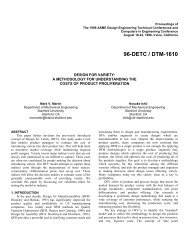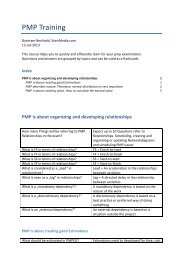Social Marketing
Create successful ePaper yourself
Turn your PDF publications into a flip-book with our unique Google optimized e-Paper software.
Execution 69<br />
The BEHAVE-based <strong>Marketing</strong> Plan<br />
There are many ways to create a marketing plan. However, we at AED have found our BEHAVE<br />
framework (described in The Basics) to be an excellent way of planning social marketing initiatives.<br />
In this section, we will describe how to develop a marketing plan based on the BEHAVE<br />
framework. The process is fairly straightforward and can be broken into eight steps. When you<br />
have completed the eight steps, you have created your plan.<br />
Step 1: Name your bottom line.<br />
What is the expected social benefit of your program? Think about what is behind the effort.<br />
What do those funding the program – or at least those who will be judging its success – want to<br />
see? This should be something simple and measurable, preferably the measure your boss, the<br />
funder, or a governing body plans to use. For example, while saving energy may be a result of a<br />
CFL campaign, your success may be measured as the percentage of homes or businesses using<br />
CFLs. Use that measure as your bottom line. Even if it isn’t the ultimate benefit to society, it<br />
is how your work will be judged. By clearly stating this goal, you can ensure that your marketing<br />
program will be designed with this purpose in mind.<br />
Step 2: Name the behavior you want to change.<br />
A behavior is a specific action taken by a specific audience under a specific set of circumstances.<br />
If people adopt the new behavior, you will accomplish the goal you stated in Step 1, above.<br />
For example, one behavior could be contractors installing CFLs in new buildings. Another<br />
behavior could be city public-works directors buying streetlights that are more efficient. While<br />
both actions could be described as selling CFLs, the two behaviors are very different. To ensure<br />
that you are being specific enough, use the Defining Behavior Worksheet in the <strong>Social</strong> <strong>Marketing</strong><br />
Tools section of this book.<br />
Step 3: Develop a strategy.<br />
Now, it’s time to figure out what you might do to change this behavior. In this step, you should<br />
conduct your formative research, analyze the results, specify the determinants of behavior –<br />
including the barriers or benefits of a behavior – that are important, and then write a summary of<br />
how your interventions will affect the key determinants. This summary – your strategy – should<br />
be expressed in three to four easy-to-remember bullet points. Or better yet, you should boil<br />
the strategy down to a single declarative sentence, if possible. Use this shorthand to ensure<br />
that your tactics (to be developed next) are “on-strategy.” To help you do this, use the BEHAVE<br />
framework worksheet, provided in <strong>Social</strong> <strong>Marketing</strong> Tools. Also, consult the section, From Behavior<br />
to Strategies, for a step-by-step approach to getting this done. This strategy, along with<br />
your BEHAVE worksheet and your written plans for Steps 4 through 7 below, are what constitute<br />
your written “marketing plan.”<br />
<strong>Social</strong> <strong>Marketing</strong> Behavior A Practical Resource for <strong>Social</strong> Change Professionals

















